Data Art Rollers Project
Data Art / Typography/ Exhibition Design & Management / Visual design / 3D modeling / Code

Goal:To find a visual language to apply data to the traditional Transylvanian wall painting medium; translate digital patterns into 3D printed rollers; and ideate museum space designs.
Result: Successfully prepared scientific art for exhibitions in MEET Milano, Postmasters Gallery, Ludwig museum; exhibitions attained NYTimes and Artnet mentions
Tools: Adobe Suite, Blender, Ultimaker Cura, Excel
Duration: 2022 – present
The roller project is an homage to the Transylvania wall painting medium used by Albert-Laszlo’s Barabasi grandfather in the 1970s and 80s for interior walls. For me, it was essential to help to preserve the legacy that vanished due to wallpaper technology and changes in tastes. This project is preserving the wall painting medium with a new perspective rooted in new technologies, including data gathering and 3D printing.
I created graphic designs based on data or visualizations, and translated these designs into exhibition space.
Currently, the roller project covers topics of billionaires, couples of the art world, fake news on Twitter and emergencies research.
Banned Books
I designed typography-based data visualizations of the top 10 banned books according to PEN America and created 3D rollers that were used to create paintings.
Numbers represent how many times books were banned in the school libraries.

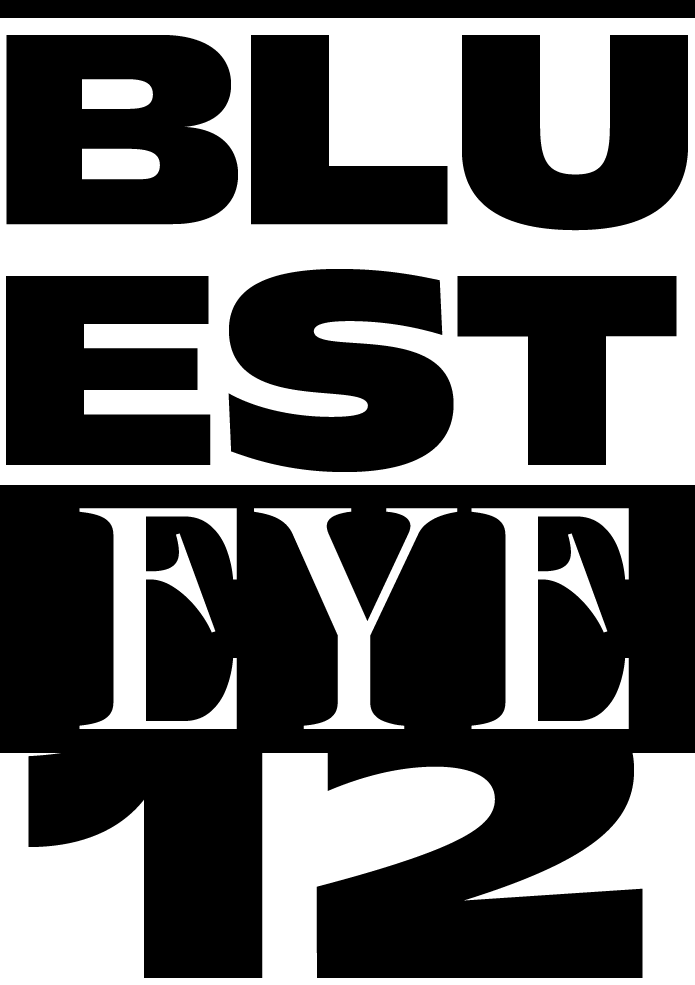






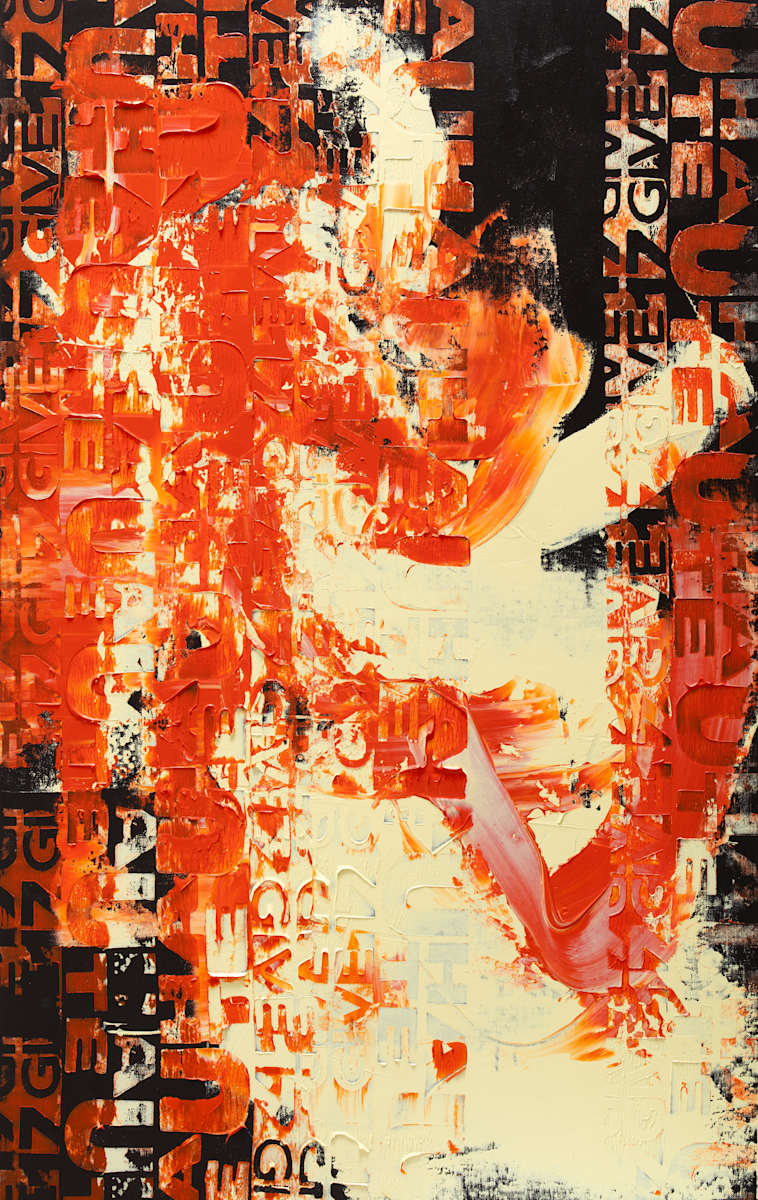
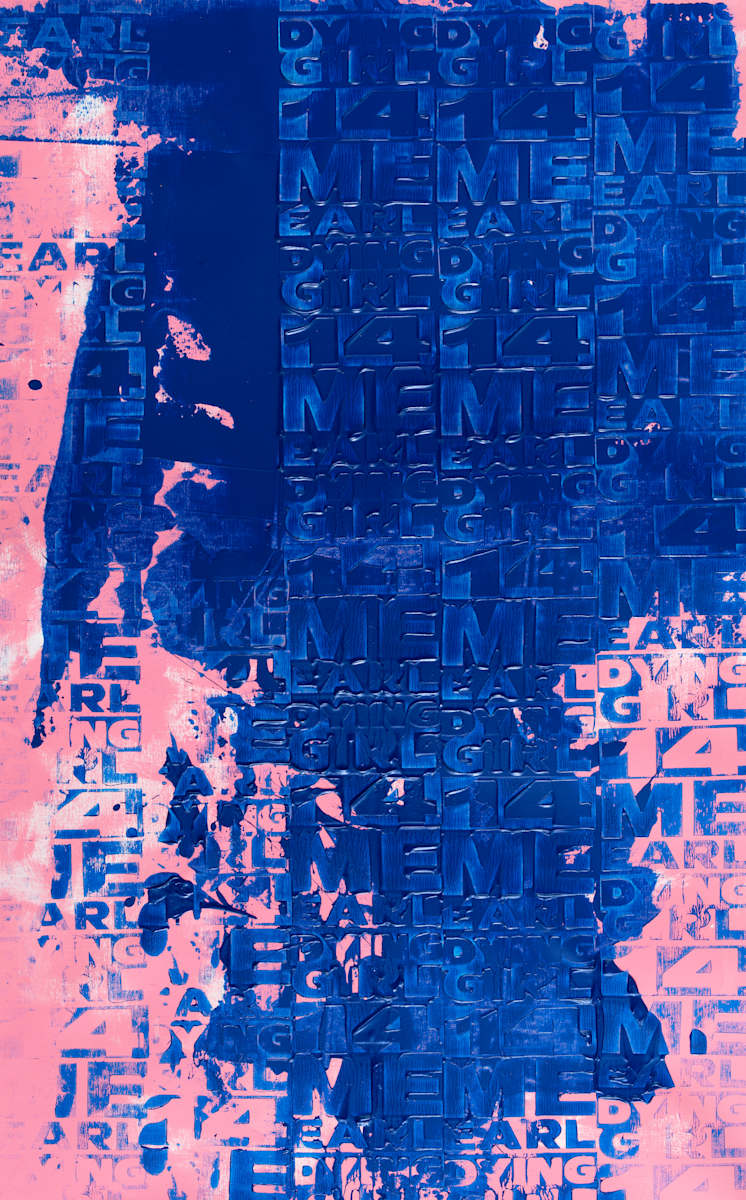
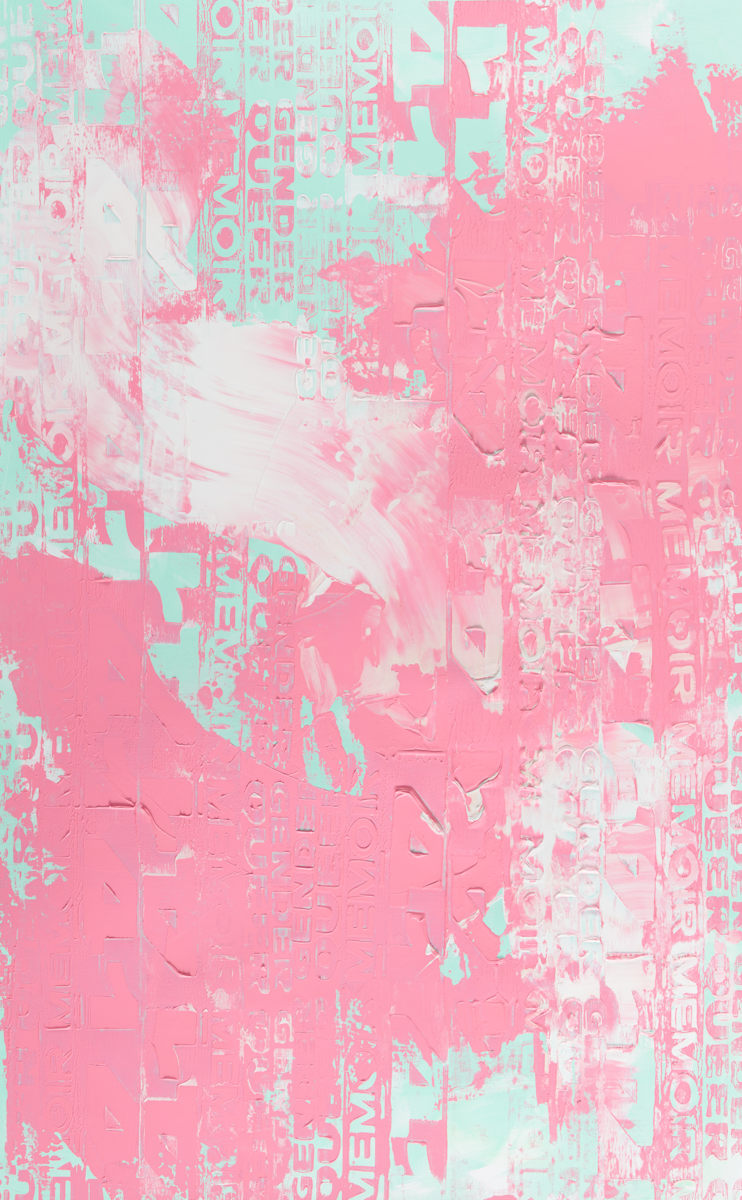
Deep Print Series, 2024
acrylic on canvas
120 x 192 cm
Billionaires
I took data visualizations about billionaire couples and their connections with particular institutions of the art world.

1. UHNW Art Museum board Members, 2022
acrylic on canvas
47-1/4 x 47-1/4 in
120 x 120 cm
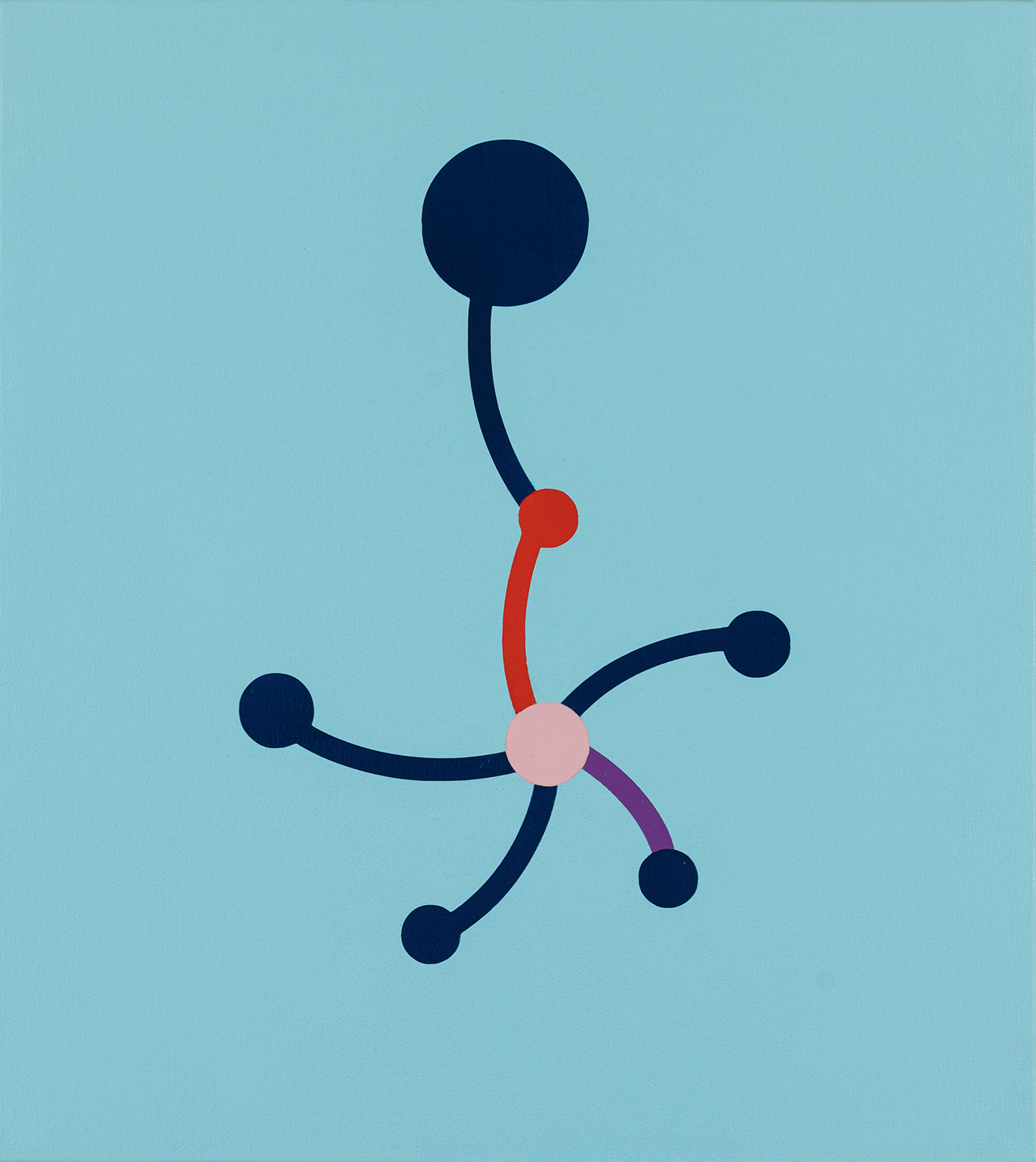
2. Adjacencies No 2_Griffin & Griffin, 2022
acrylic on canvas
15-3/4 x 15-3/4 in
40 x 40 cm
40 x 40 cm

3. Adjacencies No 6, Speyer & Farley, 2022
acrylic on canvas
15-3/4 x 15-3/4 in
“The Billionaire project is rooted in the research behind The Art Board work, which lead to the realization that while in the business world, it is common for individuals to sit on multiple boards. In the art space, it is rare to have individuals sitting on the board of multiple museums.
The Billionaires investigation expands the research from billionaires to their family members. It relies on crowdsourced knowledge of 205,548 individuals, data collected by the LittleSis project. BarabasiLab identified 76 billionaires and 29 of their family members that had direct relationships with 39 art or cultural institutions. The resulting network reveals not only how billionaires themselves connect artistic institutions, but also how through their family members, billionaires are more embedded in the art world than their personal involvement suggests“
(Barabasilab.com).
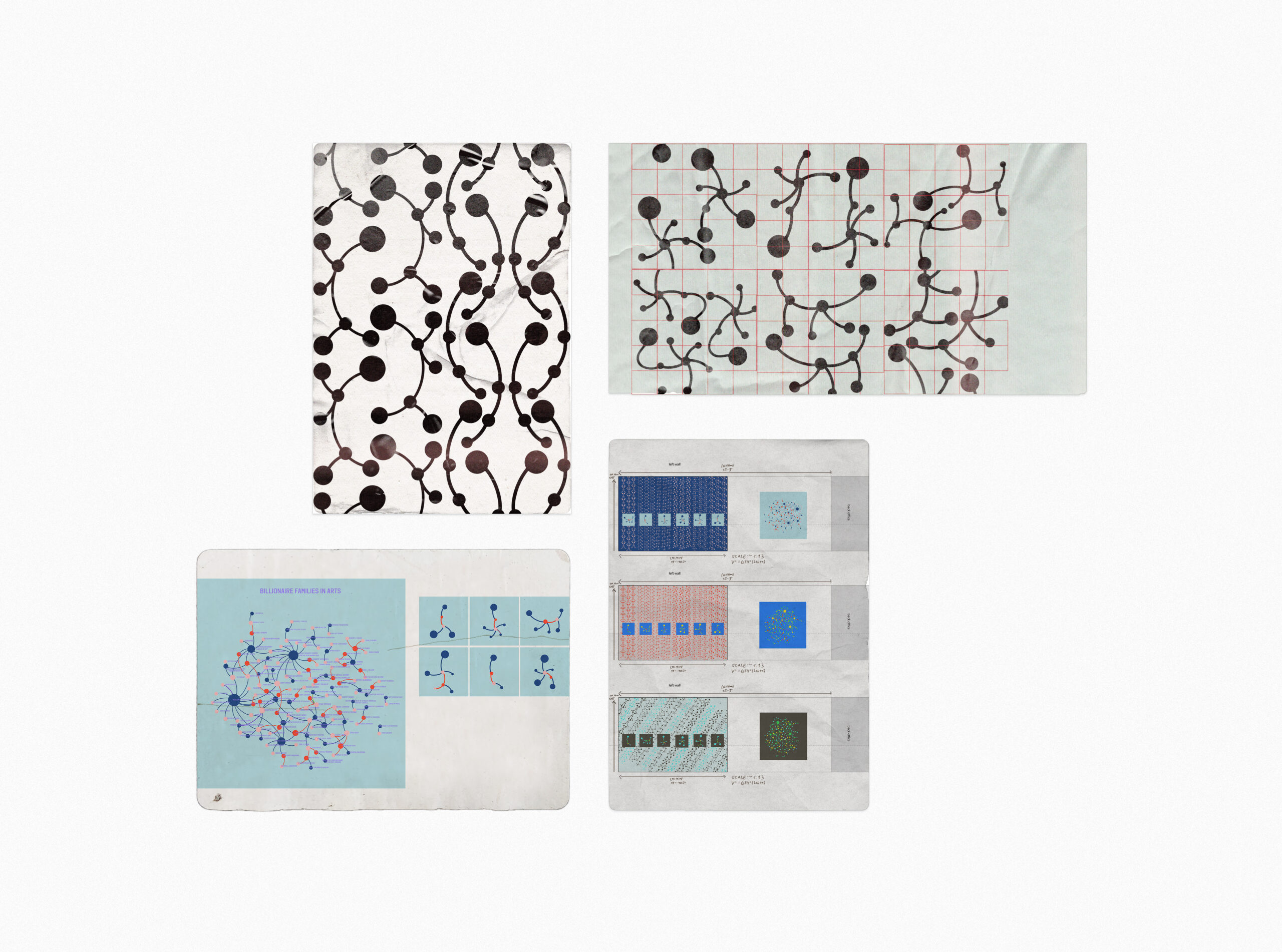
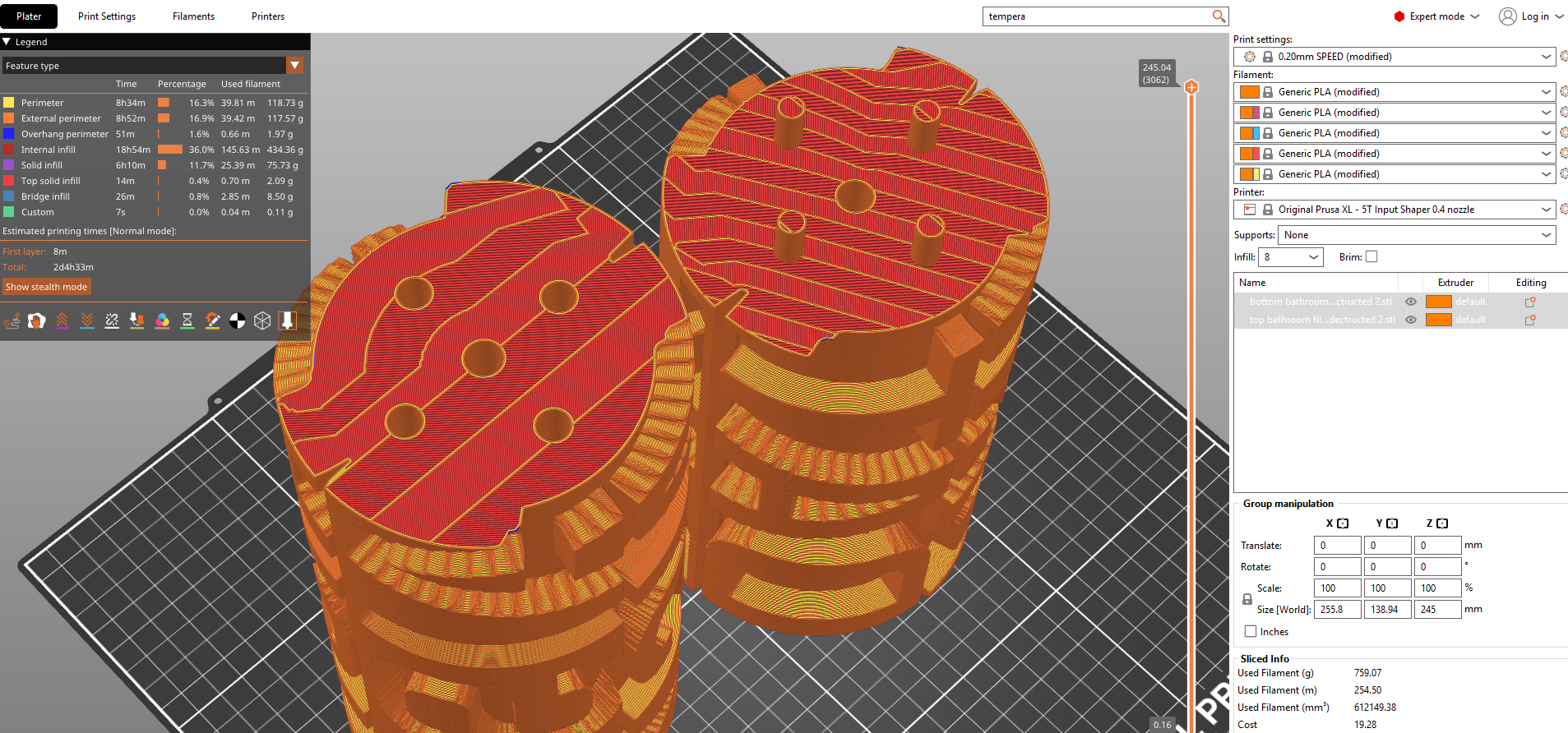

3D printed Fake News rollers with the data design
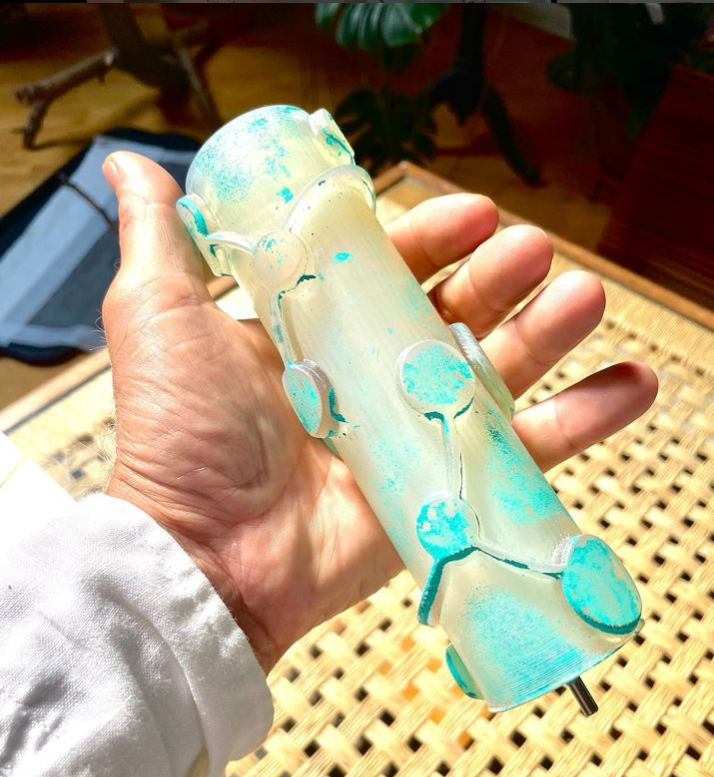
photo by Postmasters Gallery
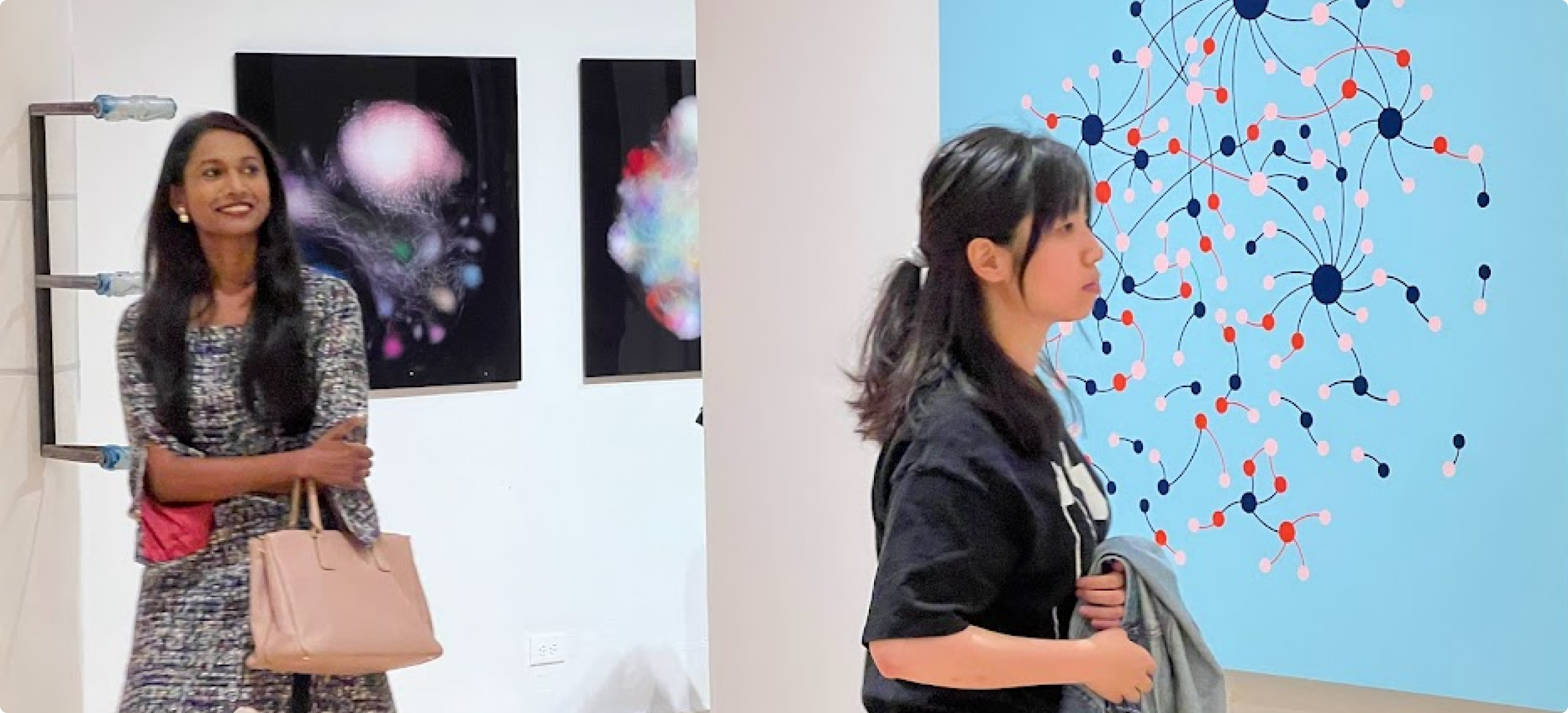
Postmasters Gallery exhibition. Photo by Nikita Treptsov
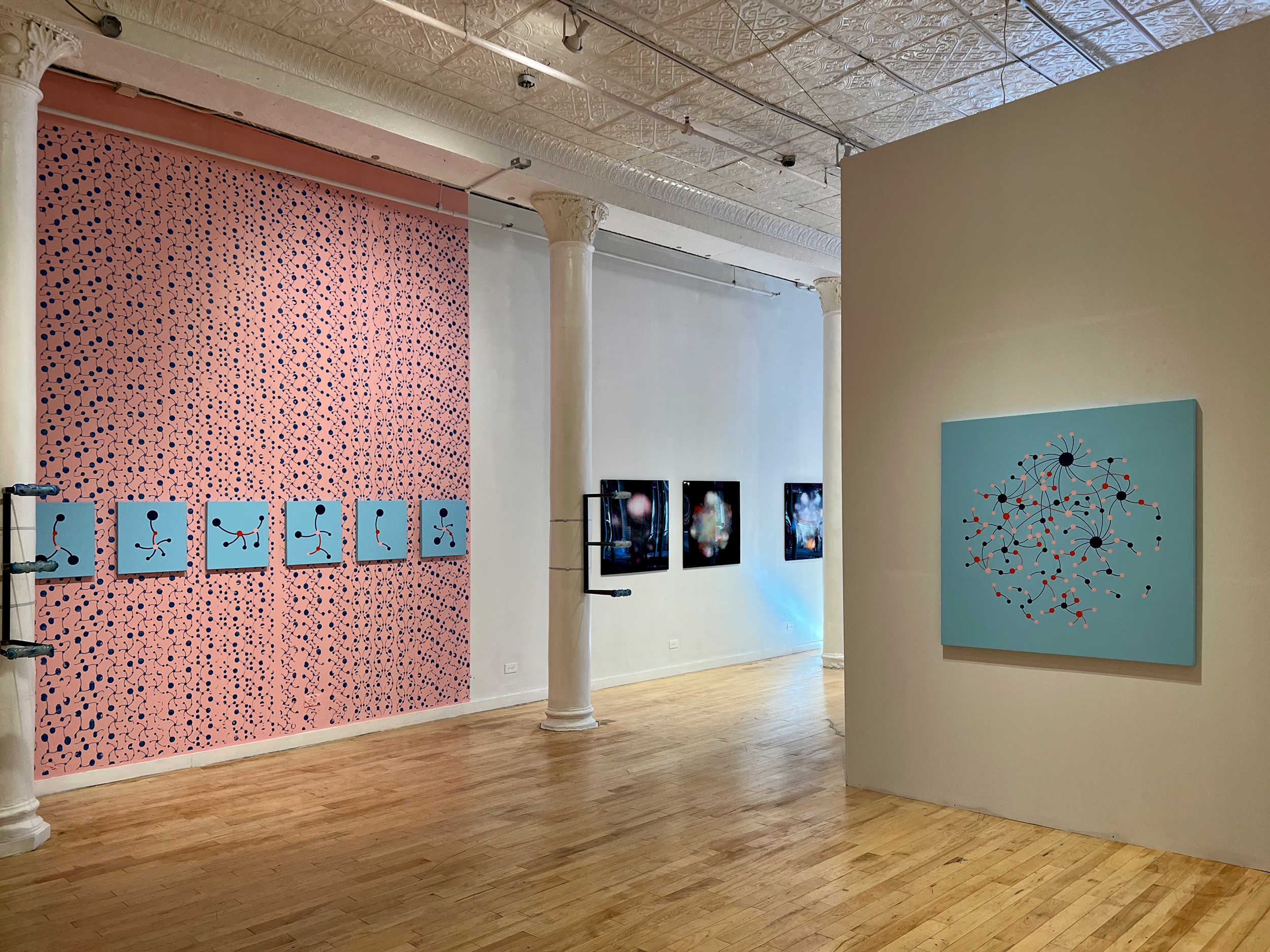
Photo by Postmasters Gallery
Fake News
It’s getting hard to know where is the truth and where is a reality distortion. The Fake News Apostles project of BarabasiLab uses big data and network science to capture the digital footprint of the fake news rollout during COVID-19.
I created digital portraits of the most active users, spreading 70% of the messages. My part was to design these portraits through data representation: the number of followers, emoji used, amount of flagged messages. I was inspired by an avant-garde movement design.

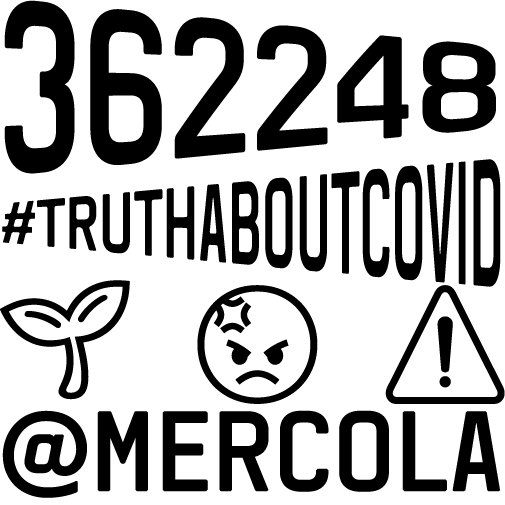




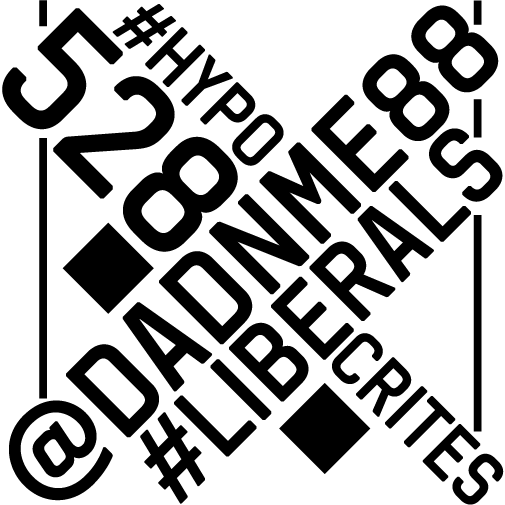
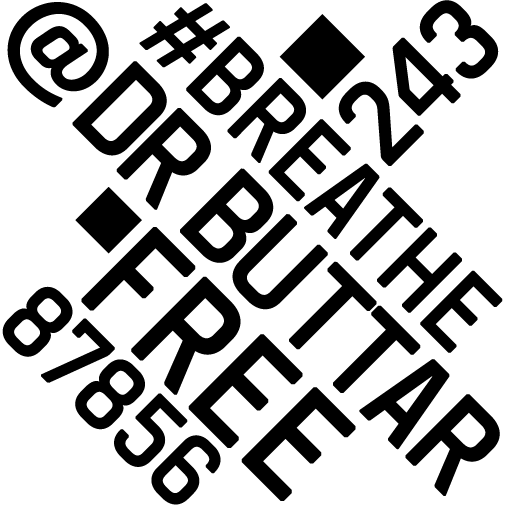
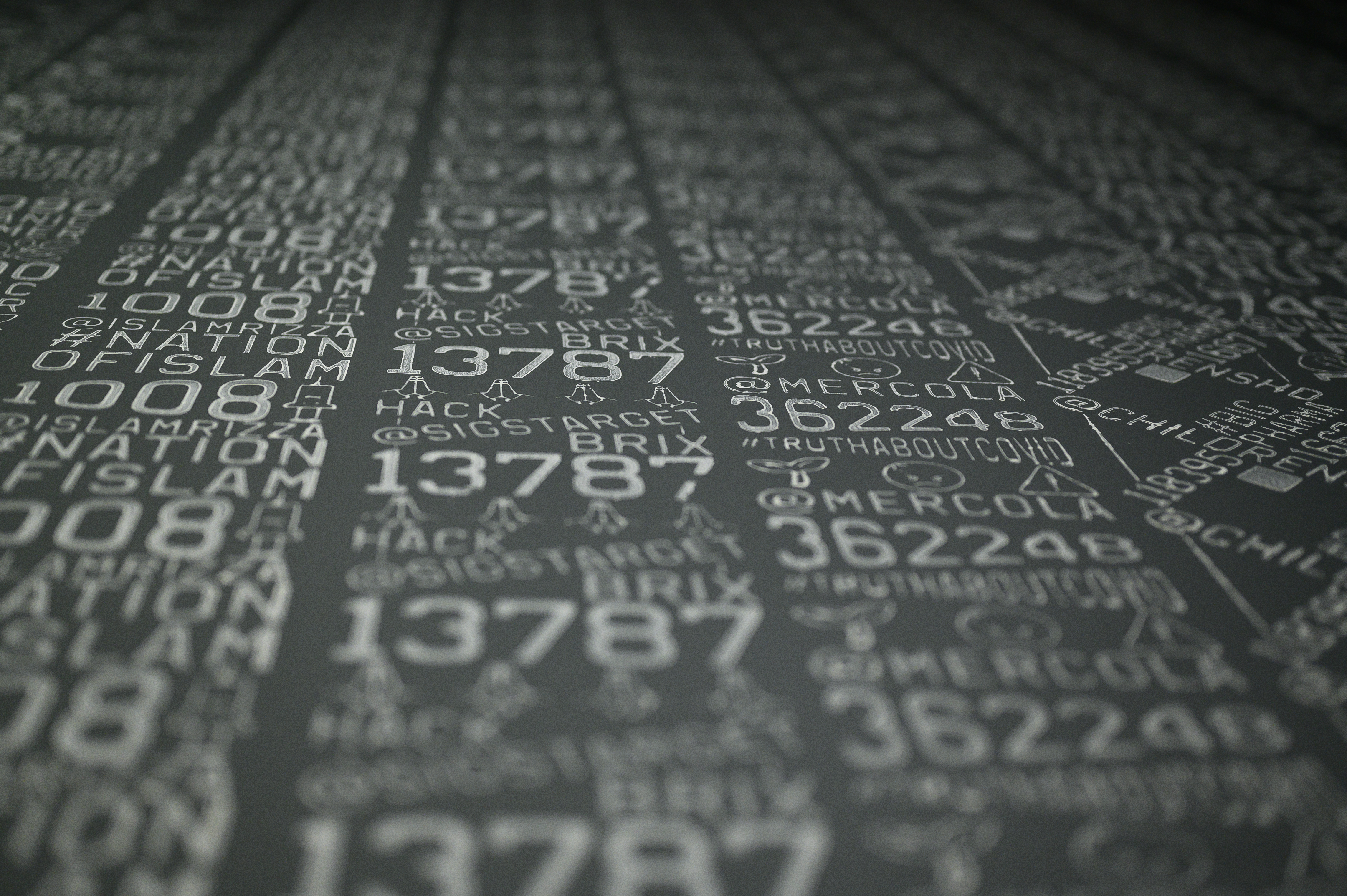
Rollers applied to the wall. Photo by SZABÓ Zsófia, Ludwig Museum

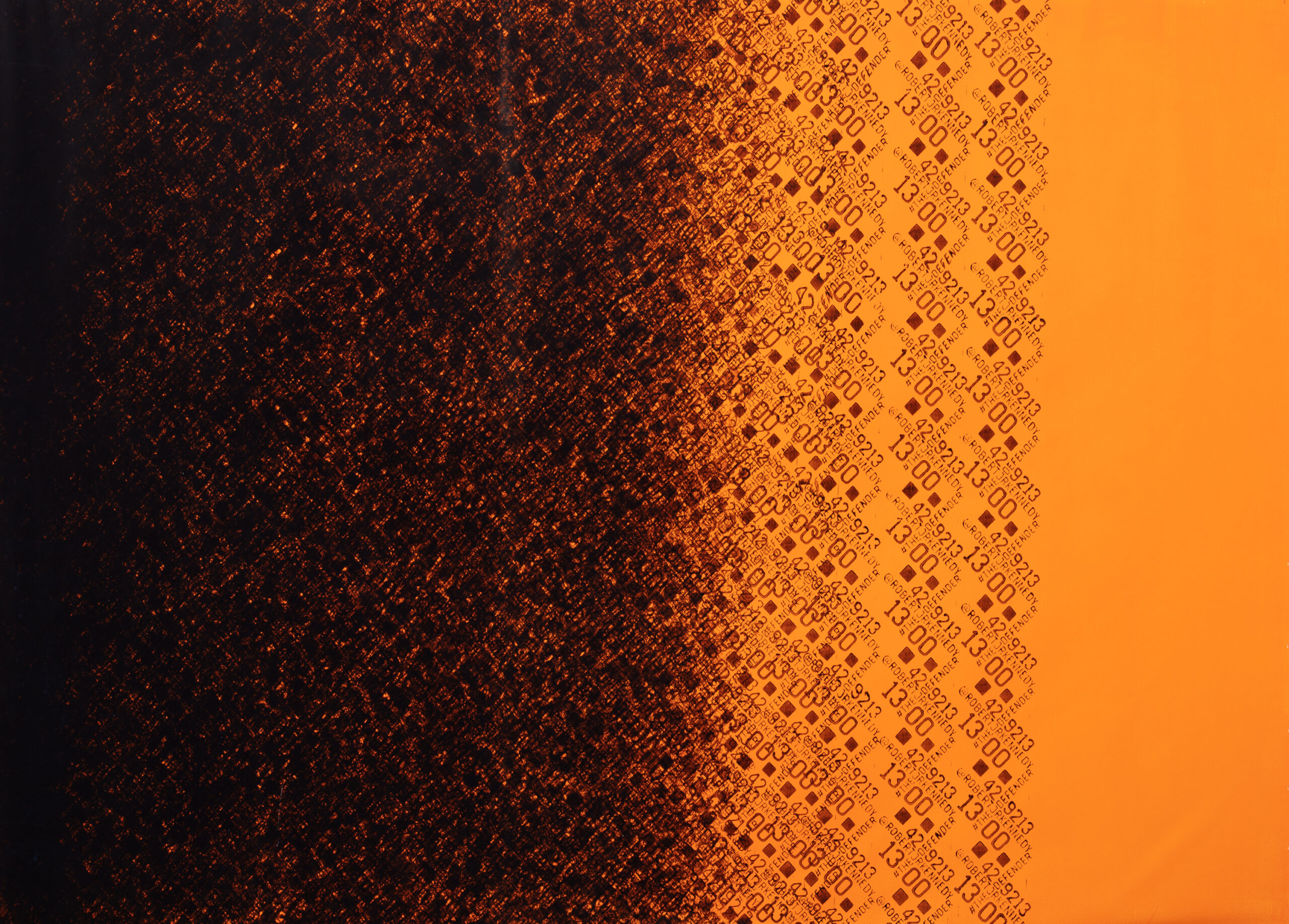
Paintings made with rollers

Roller Performance by Albert-Laszlo Barabasi, Ludwig Museum
Photo by SZABÓ Zsófia

Roller Performance by Albert-Laszlo Barabasi, MEET Center
Photo by Luca Marenda
Emergencies
Based on my research on mobile phone communication during emergencies and disasters, I translated research figures into the rollers medium and envisioned the exhibition space.
I parsed data about media coverage of these events in several languages to show in on the LED line, and ideated how to visualize the patterns on the wall.

acb Gallery wall. fotó Tóth Dávid
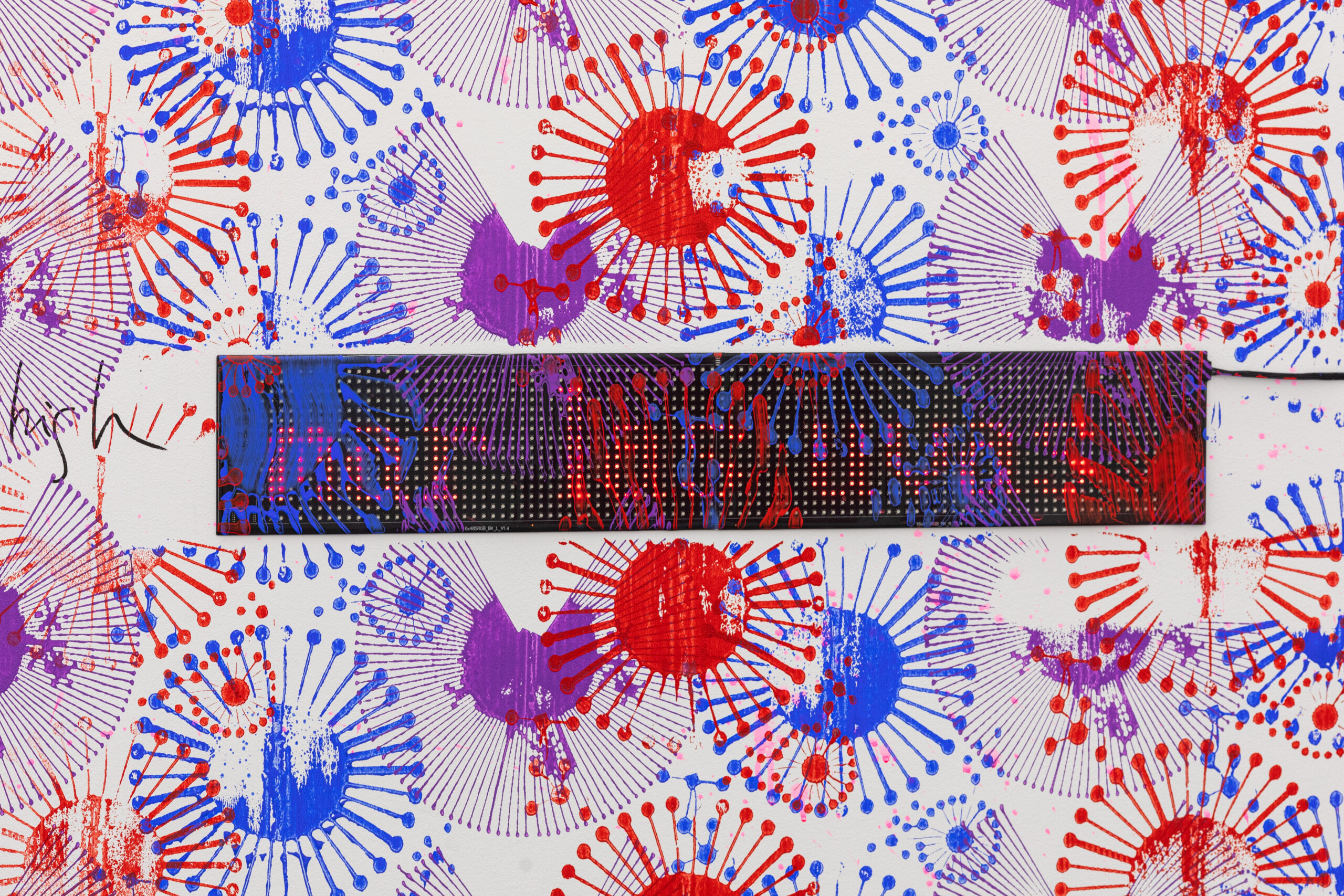

I extracted article titles for the LED via Python, unsearchable otherwise
“While most news will dead-end in small pockets of the social network, a very few witnesses will create global awareness by triggering the engagement of hundreds of individuals.“
(Barabasilab.com).
Contributors
Roller Design : Daria Koshkina
Paintings by Albert-László Barabási
Banned Books
Roller Design: Daria Koshkina
Painting by: Albert-László Barabási,
Studio Assistant: Ádám Mányoki
Data Collection and Analysis: Kishore Vasan
Photography: Daniel Kristofy
Billionaires
Research: Billionaires, A.-L. Barabási, L.Shekhtman, Y.Liu, S.Dikshit
Emergencies
Research: Emergencies, by J. P. Bagrow, A.-L. Barabási, and D. Wang, created for “Collective Response of Human Populations to Large-scale Emergencies,” PLOS ONE (March 30, 2011)
Fake News
Data Collection and Analysis: Csaba Both, David Lazer, Dakota Murray,Stefan McCabe, Ben Piazza
“BIG DATA (networking the artworld) focuses specifically on the art world power and influence structures and offers perhaps the most extensive data-driven critique of the contemporary art scene.”
Artsy.net
“BarabasiLab has shined a powerful light on some of these hard-to-access datasets in both the establishment art industry and crypto-art market in recent years. The exhibition at Postmasters continue this inquiry.”
Artnet News